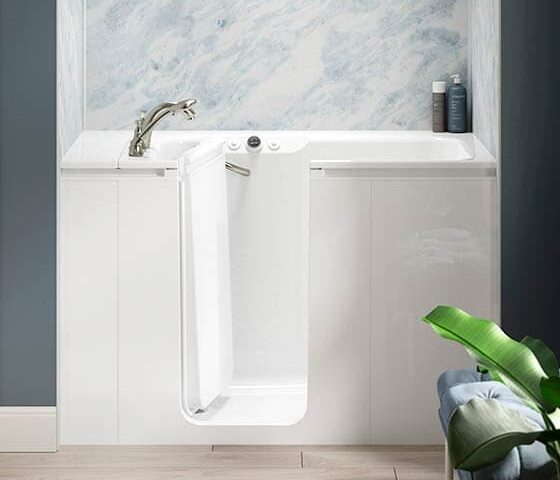According to the National Council on Aging, a quarter of adults over 65 fall each year. Most of these falls occur in bathroom due to slippery floors and stepping up and in or out of a combination bathtub-shower. Ways to help prevent such slips include installing grab bars, non-slip mats, and ventilation systems that reduce surface moisture in the bathroom. Another is the installation of a walk-in bathtub.
The specialized tubs, equipped with a door and seat, allow safer bathing, especially for people of limited mobility or who can’t get up easily in a slippery tub. Their low entries, typically a few inches high, eliminate the considerably higher edge of a traditional bathtub.
Walk-in tubs are also unique because the molded seat enables bathers to enjoy a bath in an upright, seated position while submerged in water, a truly therapeutic soak. Walk-ins have twice the depth of conventional tubs.
The tub doors have rubber seals to prevent leaks. Some manufacturers offer a lifetime warranty on the doors. Other features include drains that empty the water faster to allow bathers to open the door and exit more quickly. Wheelchair and handicap-accessible tub models also are available.
Medicare won’t cover the cost of walk-in tubs, but information on government programs that can for qualified buyers is available from the U.S. Department of Housing and Urban Development.
Depending on the tub’s type and the manufacturer or store, retail prices of walk-in tubs range from $1,500 to $11,000.
Source: Theseniorlist.org, a site with consumer information for older adults.
